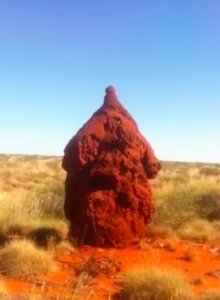Some Notes on Timber Pests
Timber pests are not just termites. They include borer, fungi and other natural methods of deteriorating timber.
People’s attention usually goes to termites as they are the most aggressive and secretive of timber predators. Also, in the Australian desserts, their mounds can reach up two meters. If it were not for these and other timber consuming insects the world would be under several hundred meters of unconsumed non-biodegradable wood. So they have a purpose.
.

.
An interesting point in Canberra with termites is that they will go into a structure, eat a small section, and then leave the rest and vanish. They have been seen to attack a piece of timber, infest a short section of 300 mm and vanish.
In Canberra, it is not the termite that is the most common source of timber pest. The most common is fungi. This is usually passed off as rot, dry rot, or simply weathering, by the lay person. But in reality, this weathering is fungi eating away the timber.
This weathering is most prevalent on the weather side of the building and likely found in the eaves. It also is particularly prevalent in the old Oregon timber that was installed in buildings in the 1980s. This timber – usually Douglas Fir – came from the USA, and after twenty or so years it was found as not suitable for Australian conditions. Basically, what happens is that the timber resin starts to slowly seep out from the timber, and there is not sufficient resin the hold the timber together. It falls apart as rot. In the Canberra subzero temperatures the cracks in the timber fill with moisture, freeze, expand, crack deeper, then thaw during the day. This allows the fungi to get down further into the timber.
In Canberra, fences have seen borer. Usually, it was in the timber when it was milled and soon after it left the timber. If one looks at enough tunnels one finds one cut sideways, and that means the tunnel was there before the mill cut the timber. It can then be expected that these insects then vanish in the Canberra subzero winter.
In all this, the thing to do is to be vigilant, book the inspection, pay it, and be prepared to do maintenance.
For more information on residential reports, questions answered, ACT property inspections, and booking, please contact us as needed.
